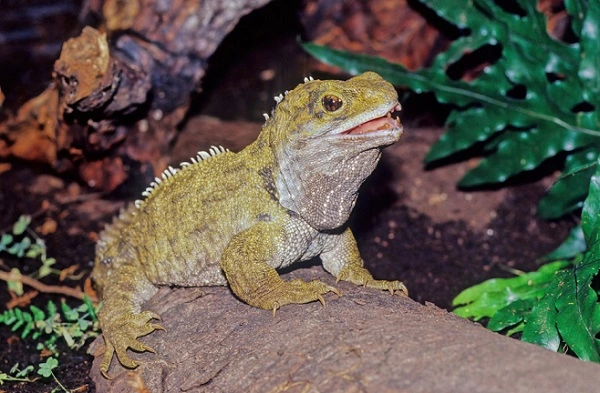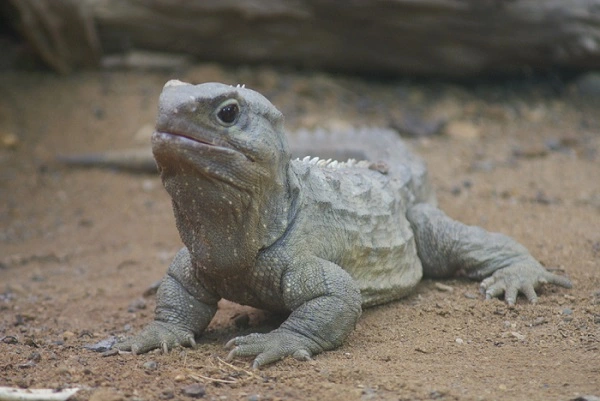The tuatara is a critically endangered reptile that can be found only on the islands of New Zealand. With its unique appearance and interesting biology, the tuatara is an important part of New Zealand’s natural heritage. Unfortunately, human activities have caused the tuatara population to decline sharply in recent years, and they are now considered to be one of the world’s most at-risk reptiles. There is hope, however, that with concerted conservation efforts, the tuatara can be saved from extinction.

Tuatara Description
Tuatara are reptiles endemic to New Zealand. Tuatara have a number of characteristics that distinguish them from other reptiles. For example, they have a third eye on the top of their head, which is believed to help them regulate their body temperature. Tuatara also have a pair of claw-like appendages known as “spurs” on their hind legs, which are used for mate recognition and territorial displays. Tuatara are the only surviving members of an order of reptiles that flourished during the Mesozoic era. Today, there are only three species of tuatara remaining, all of which are found in New Zealand. The tuatara is a national icon and is featured on the New Zealand five-cent coin.
Tuatara Habitat
Tuataras are lizards that are only found in New Zealand. They are nocturnal animals that live in burrows during the day, and come out at night to hunt for food. Tuataras are most commonly found on offshore islands, as they are not able to compete with introduced mammals on the mainland. Tuataras prefer dry, rocky areas with plenty of cover from vegetation. They often live in pairs, but can also be found living alone or in small groups. Tuataras can live for over 100 years, and their slow rate of reproduction makes them vulnerable to extinction. As a result, it is important to protect their habitat so that these unique animals can continue to thrive.
Tuatara Diet
Tuatara are lizards found only in New Zealand. They are unusual creatures, and their diet is one of the things that makes them so interesting. Tuatara are mostly insectivorous, but they will also eat small mammals, birds, and other lizards. They have been known to eat carrion on occasion as well. Tuatara consume a wide variety of insects, including moths, beetles, grasshoppers, and crickets. They will also eat snails and worms. Tuatara will occasionally eat small mammals such as rodents and bats. Birds are another item on the tuatara menu, and they have been known to kill and eat chicks as well as adults. Lastly, tuatara will sometimes eat other lizards, including geckos. In captivity, tuatara are usually fed a diet of insects and worms. This diet provides them with all the nutrients they need to stay healthy and thrive.

Tuatara Size
Tuataras are medium-sized reptiles that are found only in New Zealand. Adults typically reach lengths of between 60 and 70 cm, with females being slightly larger than males. However, some individuals can reach lengths of up to 1 m. In general, tuataras are olive-green or brown in color, with dark bands running along their backs. They have sharp claws and teeth, which they use for catching prey. Tuataras are also unique in that they possess a third eye, which is located on the top of their head and is covered by a clear scale. This third eye is believed to help them detect incoming predators.
Tuatara Lifespan
Tuatara are unique in many ways, including their long lifespan. Tuatara can live to be over 100 years old, and some individuals may even live to be 200 years old! This is far longer than any other type of lizard, and it is one of the longest lifespans of any reptile. Tuatara are slow to mature, and they do not reach sexual maturity until they are 20 years old. However, once they reach adulthood, they can live for many decades. While the exact reasons for their longevity are not known, it is likely that their slow growth rate and low metabolism play a role. Tuatara are remarkable creatures, and their long lifespan is just one of the many things that make them special.
Tuatara Behavior
Tuatara are a type of lizard found only in New Zealand. These reptiles are unique in many ways, including their behavior. Tuatara are generally solitary creatures, only coming together to mate. They are also quite sluggish, spending most of their time basking in the sun or resting in burrows. When they do move, they often do so very slowly, with little more than a shuffle. Tuatara are also known for their impressive longevity, with some individuals living for over 100 years. All of these factors make tuatara behavior quite different from that of other lizards. As a result, these reptiles are fascinating creatures to study.
Tuatara Speed
Tuatara are a type of lizard found only in New Zealand. They are the only surviving members of a group of reptiles that were once widespread throughout the world. Tuatara are slow-moving creatures, and their top speed is only about six kilometers per hour. However, they are capable of short bursts of speed when necessary. For example, when tuatara are alarmed, they may run up to 15 times their normal speed in order to escape from predators. Tuatara are also good swimmers, and they have been known to travel long distances through the water in search of food or new habitat. In general, tuatara move slowly and deliberately, but they are capable of moving quickly when the situation calls for it.
Tuatara Hunting
Tuatara hunting is the practice of tracking down and killing Tuatara lizards for their meat. Tuatara are a delicacy in some parts of the world, and their meat is highly prized for its flavor and texture. Tuatara hunting is a difficult and dangerous sport, as Tuatara are fast and agile lizards that are capable of inflicting serious injuries. Tuatara hunters must be skilled in tracking and apprehending their prey, as well as in handling and butchering the lizards. Tuatara hunting is closely regulated in many parts of the world, and only a limited number of Tuatara lizards can be legally killed each year.
Conclusion
Tuatara are an ancient species of reptile that can be found in New Zealand. They are one of the oldest living creatures on earth and have a number of features that make them unique among reptiles. For example, they have two functioning eyes on each side of their head (most other reptiles only have one), and they can rotate their heads almost 360 degrees. Tuatara also have a third eye, located in the center of their forehead, which is used to regulate their body temperature. Unlike most other reptiles, tuatara don’t lay eggs – females give birth to live young.
Frequently Asked Question

